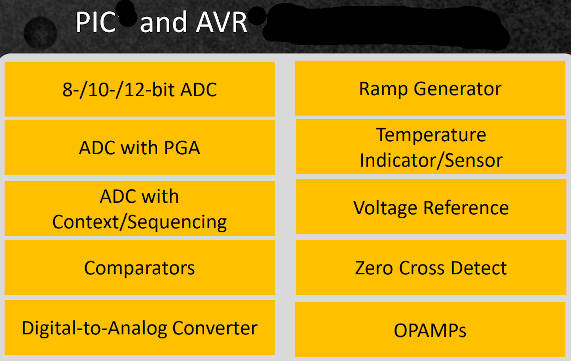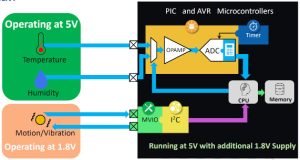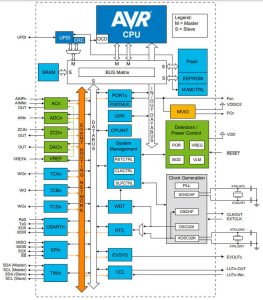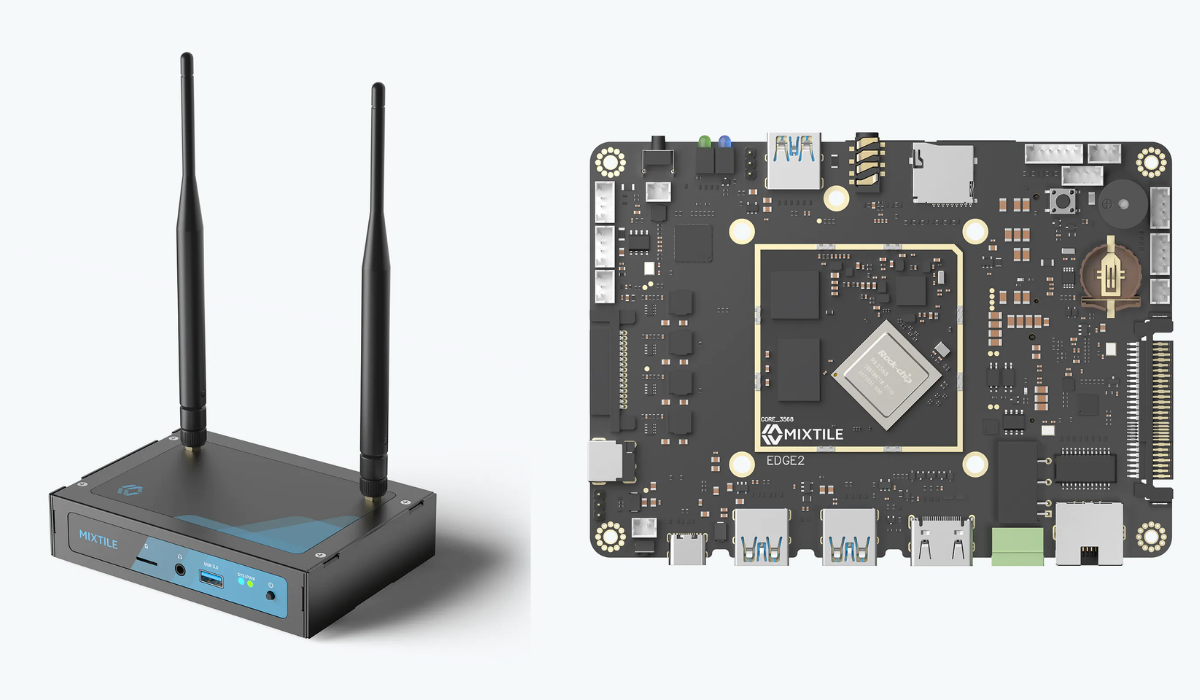
Users who favour PIC or AVR should not be concerned, according to Microchip marketing director Oyvind Strom: “We are maintaining the bus structures of PIC and AVR, the way you interact with the peripherals and the pin-outs,” he told Electronics Weekly.
PIC and AVR shared analogue peripherals
As an example of product line integration, the company has made use of existing analogue periperals created for tinyAVR 2 MCUs, and used them in the PIC16s that it is announcing today (see below), within a digital wrapper so that legacy PIC code will run “with minor modifications”, said Strom. Going the other way, PIC’s zero-crossing detector block is headding for some AVRs.
With 32bit processors everywhere, why is Microchip developing new 8bit MCU ranges?
Primarily, because sales are growing, according to Strom – the company now has 32% of the worlwide 8bit MCU market, he added.
 Sensing nodes will be a major use of these new parts, he continued, explaining: high-volume consumer IoT nodes are likely to use a single 32bit processor to run everything, while industrial product developers are more likely to combine a wireless module that is already FCC approved, with an 8bit MCU for sensor signal conditioning and any to run application that runs alongside.
Sensing nodes will be a major use of these new parts, he continued, explaining: high-volume consumer IoT nodes are likely to use a single 32bit processor to run everything, while industrial product developers are more likely to combine a wireless module that is already FCC approved, with an 8bit MCU for sensor signal conditioning and any to run application that runs alongside.
Integration: not just peripherals
Microchip has essentially two MCU processes spread across its three waver fabs: Tempe Arizona, Gresham Oregon and Colorado Springs Colorado – the latter once Atmel’s.
One of the processes is optimised for large flash memories, and the other, a descendent of Atmel’s AVR process, is optimised for smaller flash memories and wider operating voltage range. Both are now used for both PIC and AVR product ranges, selected according to the product’s intended applications.
Annonced today are 65 parts in five product familes, for release in the second quarter this year:
- PIC16F171 (14 parts)
Op-amp, 12bit ADC, analogue comparators
“cost-effective”, said Microchip, management of analogue sensing signals - PIC16F181 (14 parts)
12bit ADC, two 16bit dual-output PWMs, four configurable logic cells
Digital functions with precision timing - PIC16F180 (16 parts)
10bit ADC, 8bit DAC, analogue comparator
Control systems and communication - PIC18-Q71 (9 parts)
Two op-amps, 12bit differential ADC, analogue peripheral manager
Mixed analog and digital sensing in edge nodes  AVR-DD (12 parts, right)
AVR-DD (12 parts, right)
Multi-voltage I/O, 12bit differential ADC, analogue comparator
Cloud-connected sensors, sensor fusion, general purpose PCB controller
The three PIC16 parts are made on the AVR-derived process, and will come in 8, 14, 20, 28 and 40pin packages, with up to 28kbyte flash and 2kbyte ram. PIC16F180 parts also get eeprom.
The PIC18 family comes in 28, 40 and 48pin variants with up to 64kbyte flash and 4kbyte ram – with customisable boot block size, and AVR DD devices have 14, 20, 28 or 32pins, with up to 64kbyte flash and 8kbyte ram.
Both PIC18 and AVR DD devices get some form of programmable logic peripheral to manipulate digital signals outside the tyrany of a processor clock.
Amongst the analogue peripherals, op-amps now get an internal resistor network on with which to set gains, and some of the ADCs include hardware to calculate averages or filters, or to implement accumulation or window comparison – and some get a programmable gain amplifier front-end.
Away from analogue peripherals, a numerically-controlled oscillator arbitrary frequency generator appears in some of the PICs, as well as Microchip’s complementary waveform generator for power switching control, and the zero-crossing detector.
For programming, Microchip Studio (once Atmel Studio) continues to cover all AVR parts, while MPLAB-X covers all PICs and more recent AVRs.
The XC8 C compiler – available in free and paid versions – is available for both PIC and AVR parts, while programmer of AVRs can also use GPT and, with payment, IAR’s C compilers.







